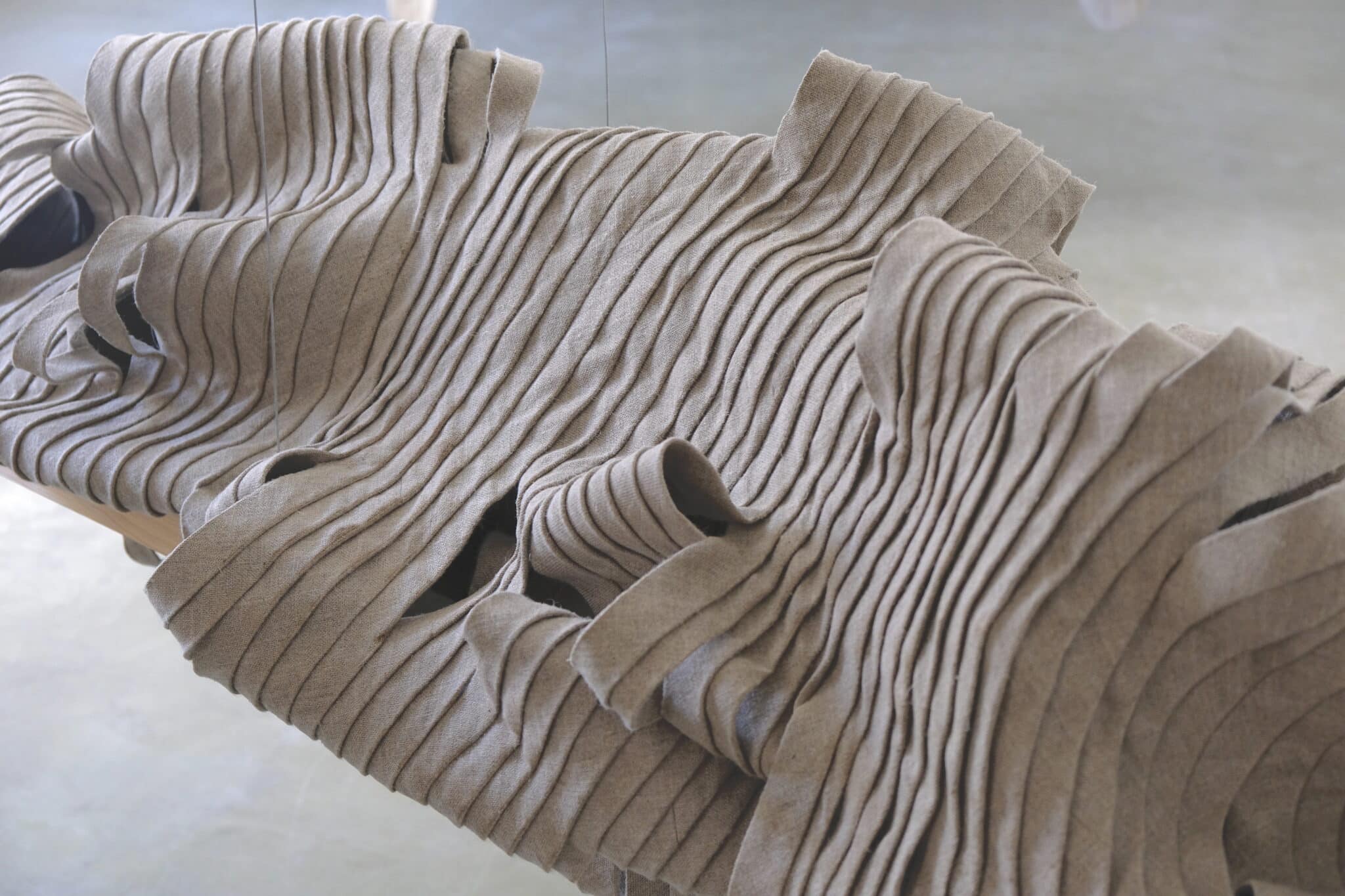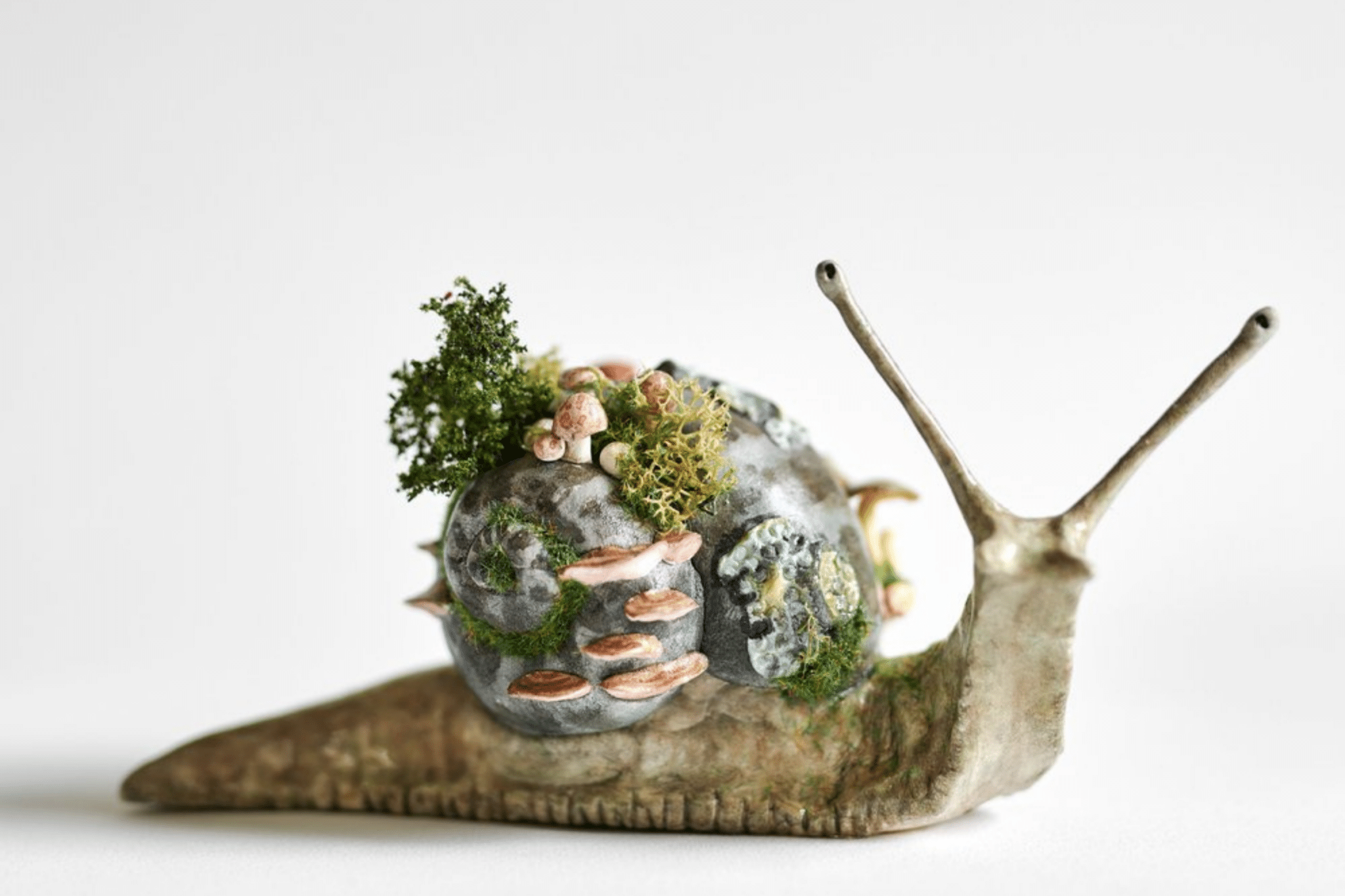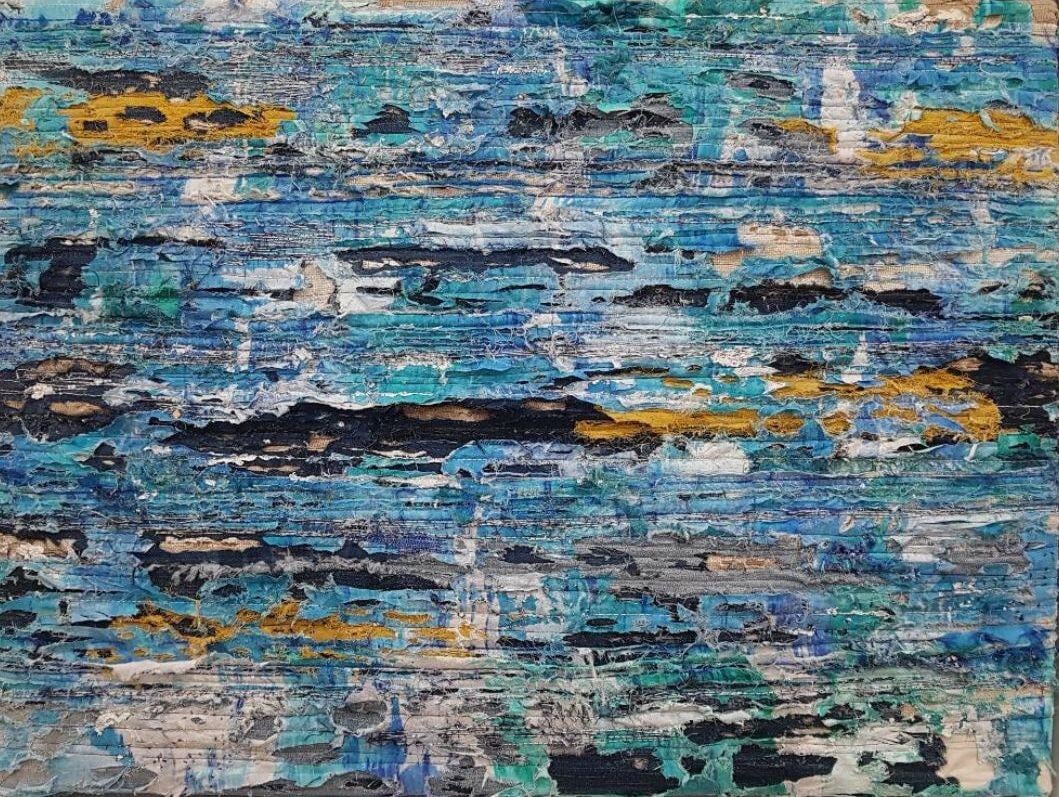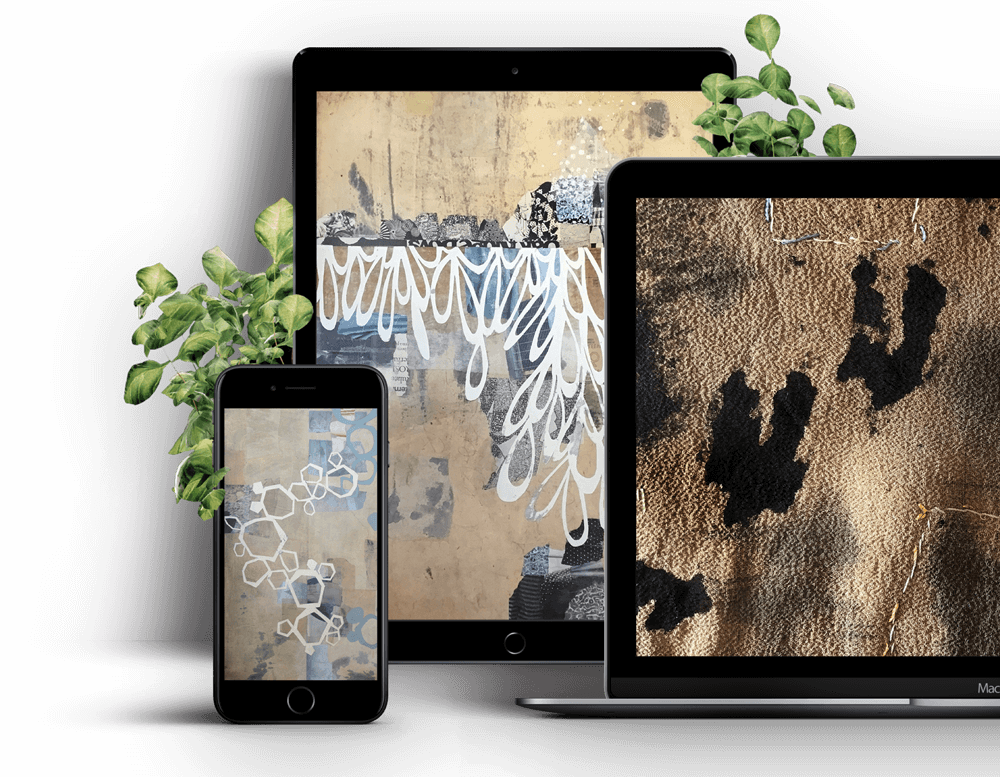Clare Celeste
Fibre Arts Take Two enjoyed a deep conversation with artist Clare Celeste. Allow Clare to envelop you with her passion for the environment.
Clare’s Friday Feature Artist Interview can be found at the bottom of this page.
American artist and environmentalist Clare Celeste is on a mission to educate and inspire action to reverse climate change and restore our planet’s biodiversity.
Although unintentional at first, Clare’s tantalising paper installations of nature present the beauty of fauna and flora, as well as highlight mankind’s threat to the environment, combining old naturalistic drawings of long-lost species dating back to the 19th century with the photography of modern-day flora and fauna.
Clare’s hope is that her artwork is a vehicle for change. She invites viewers to remember the world how it was, see the world how it is, and imagine how it could be. Fibre Arts take Two enjoyed a deep conversation with Clare about her work and her passion for environmental advocacy.
An early start
Clare’s passion for collage started early. “I always kept a scrapbook,” she says, “I was always collating, and when I was really young, I drew a lot, which my parents encouraged. My mother would take me to art openings, and we would go to live drawing classes together. When I was 12, turning 13, my father bought me this beautiful, hand-bound, really thick journal. I kept that book for years and would always be adding to it. I still have it, actually, and it’s all collage and mixed media. I think that’s when I really fell in love with it, but I always saw it as a personal practice that I just did for myself.”
Of course, Clare’s collage work didn’t stay private. “In my mid-20s, I was planning a composition of a painting that I was going to do by doing a collage. Then I did the painting, and I looked back at the collage and was like, ‘Oh, the collage is much nicer’. And that was when I decided to keep collage as my main medium.”
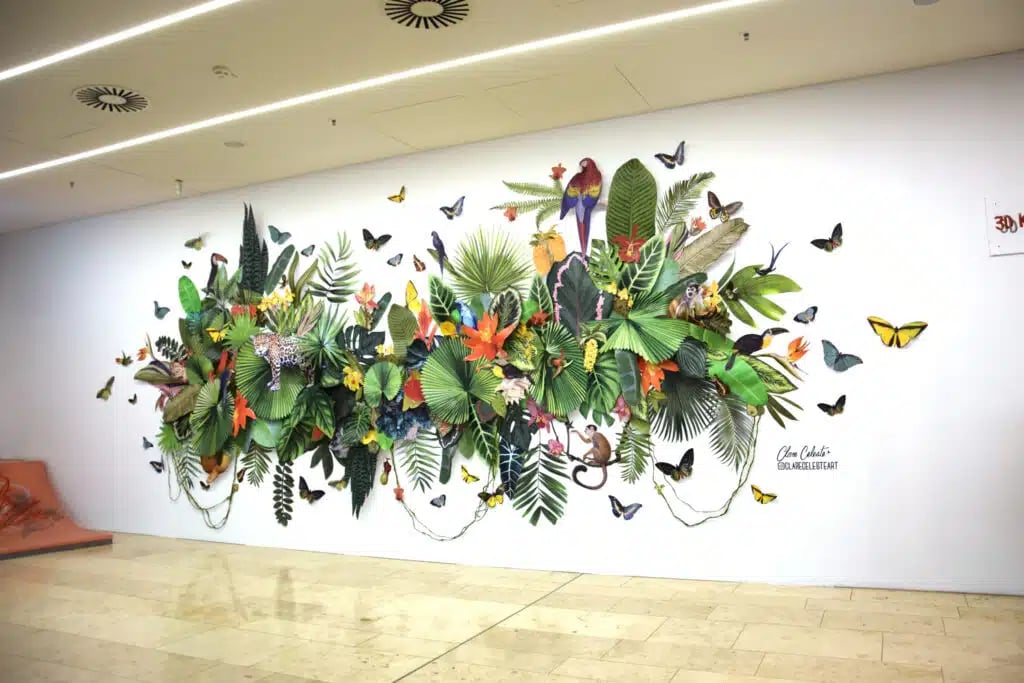
Gradual change
Over the years, Clare’s methods of collage have changed. “In the early days. It was me at thrift stores and flea markets,” says Clare, “collecting the images that way. Now that I’ve scaled up the work and now that I have done many commercial commissions that have a faster turnaround time, I’ve started collecting the images online from online archives and putting them together in Photoshop. These days I design everything in Photoshop and then have them printed. . I’ve found these incredible archives, and I really enjoy the process of putting them together. It’s different, but it’s still really fun in a different way.”
Copyright
A major concern for collage artists is always copyright. “I didn’t use to think about it,” Clare says, “I was using found materials, so I wasn’t it wasn’t top of mind for me. And again, it always started off as something quite private and a hobby.”
Nowadays, things are different, “The process that I’ve come up with, to avoid any copyright infringement, is to go on archives that either have open copyrights, such as Pixabay or Unsplash. For the vintage imagery, I use the Biodiversity Heritage Library. They have a collection on Flickr, that is super fun to scroll through and look through. And they tagged their images, and almost all of them are in the public domain. I’ll add the caveat that if I have a commission that’s going to be shown to a lot of different people, I always reach out to the photographer to get a model release form. It’s important for artists to support artists when they can. “
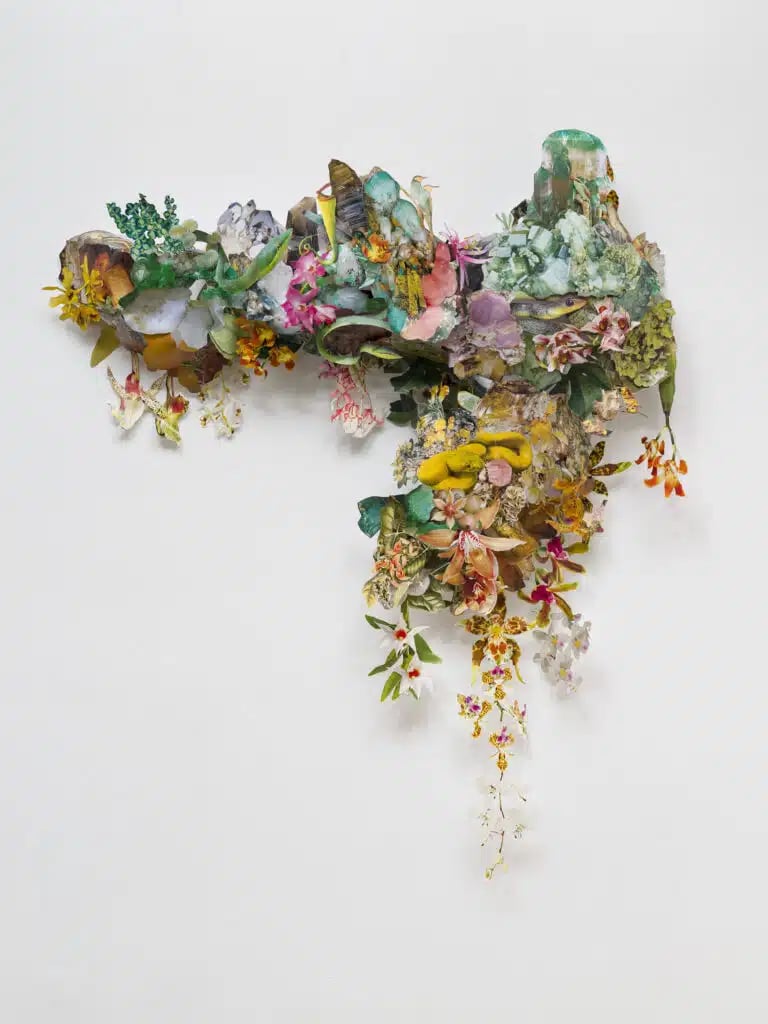
Environmentalist
For Clare, environmental concerns are at the forefront of her mind these days, “I did this installation called the Mushroom Hunters, and when I was working on that series, I did a collage, and I was like, ‘Oh, this is the passenger pigeon. This pigeon has gone extinct. I wondered how many of the species of plants and animals in these series are endangered or already extinct? And then I put out a story on Instagram, and I said, ‘Hey, is anyone working in biodiversity?’ and I got in touch with a really fantastic biodiversity scientist called Louisa Dorkin. We were like, ‘Let’s figure out how many of these species are endangered’, and at a certain point, we were like, ‘Oh, my God, everything is endangered.’ Which is really terrifying and honest. So 68% of biodiversity has been lost in the last 50 years. Which is terrifying. And then we kind of just sat back and were like, ‘everything’s endangered, including us’.”
Activism
After unleashing her passion for the environment, Clare has devoted much of her time to environmental advocacy. She has a few tips for those who want to make a difference. “There are three things I would say. First, I would suggest reading the All We Can Save Project. And don’t read it alone; get a circle of people you love or don’t know; I did it with strangers. And in the end, they’ve become dear friends.
“Second, create a Venn diagram. What do you love to do? What’s the work that needs to be done? And what are you good at? Map that out and find that centre point. It might be climate communication, or it might be joining a community garden.
“The third thing is to build a community of people that can support you around this. It’s important to take care of yourself. We are living through hard times at the moment. Whether one chooses to engage with it or not, I think we’re all feeling it, and if we want a regenerative world, we also have to treat ourselves regeneratively. Slow down, call into yourself and drop into your body to take care of yourself.”
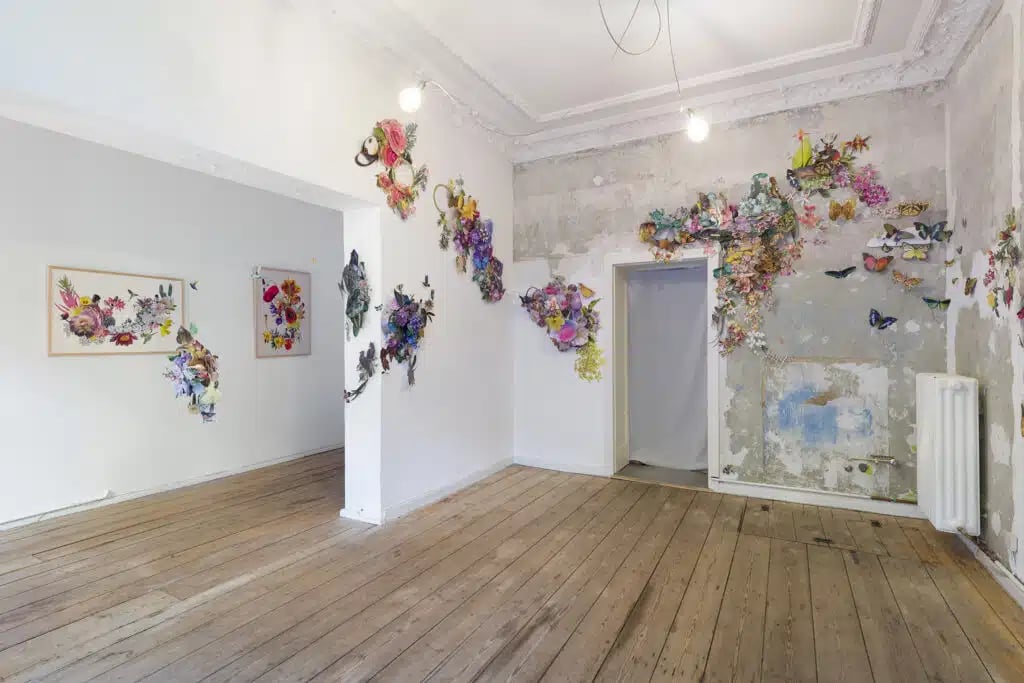
About the artist
Clare works with thousands of hand-cut images of flora and fauna to create immersive installations evocative of our planet’s threatened biodiversity. She is dedicated to raising awareness and action around the ecological and biodiversity crises.
Clare holds a Master’s in Public Policy from UCLA and brings art and environmental advocacy together.
Clare’s mission is to:
- Partner with those committed to a just, regenerative, biodiverse future powered by 100% renewable energy.
- Create collaborative works that engage audiences of all ages on the importance of biodiversity.
- Use art as a form of environmental activism.
Clare’s work has been featured in the Guardian, Deutsche Welle, Oprah Magazine, This is Colossal, The Jealous Curator, and My Modern Met.
She lives and works in Berlin with her husband and son.
Notifications
Join Our Newsletter
OUR YOUTUBE CHANNEL
View our interviews and more on our Youtube channel!
OUR FACEBOOK GROUP
Join our Community and stay updated with our upcoming announcements!
